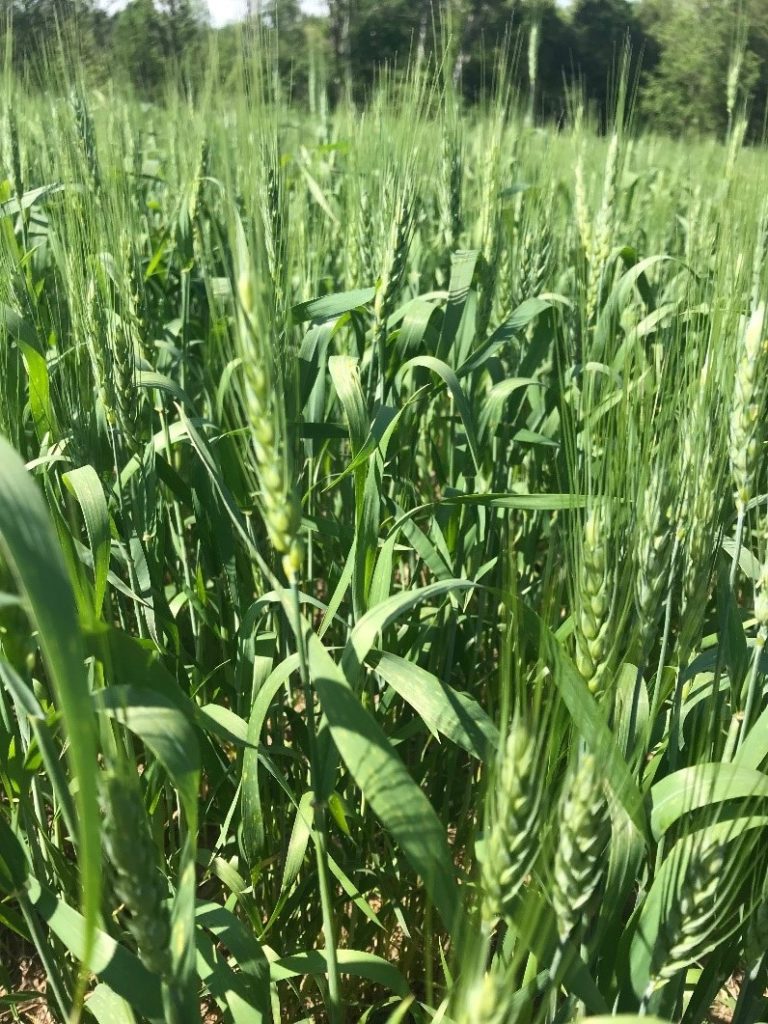Corn
Significant planting progress was made the end of last week and through the weekend as sunshine and warm temperatures dominated for a string of days. Despite the calendar date and reduced yield potential of later planting, many continued to plant corn noting the competitiveness of returns relative to soybeans. Many areas are reporting corn planting reaching 90-95% of intended acres, except for regions with heavy textured soils where some are reported to have just started planting corn while others have not had the ability to start any field work. Reducing hybrid maturity has been ongoing. With the latest rainfall and more forecasted, reports suggest growers unable to plant corn this week will likely switch to soybeans. There is a wide range in crop stages based on differences in planting windows, even within local areas. Crop ranges from just planted to 6 leaf or beyond in very early planted fields on light textured soils. Erosion is quite evident in conventional tilled fields this spring. With the exception where erosion or soil deposition has occurred, agronomists are reporting good emergence and crop stands, despite planting conditions that were pushed in many fields. This is likely attributed to consistent rainfall keeping soil soft after planting.
Soybeans
Significant planting progress has been made with the break in weather since last week. Areas with medium to lighter soils and less rainfall are reporting planting progress as high as 50-75%. Areas on heavy soils report very little to no planting. Seeding rates should now be increased by 10% to help compensate for plants with fewer pods. After June 15th rates should be bumped up by another 10%. Growers intending to plant wheat in the fall may want to consider reducing maturity around June 15th to ensure timely planting. Weed control has been more challenging this spring due to wet soil conditions, pressure from other field operations, and large weeds from continued weed growth.
Cereals
Winter wheat has headed out in more advanced fields in the deeper South West with T3 fungicide applications ongoing in regions such as Essex and Kent county this past week. Fields in similar maturities to the London/Stratford areas are just beginning to head out. Given the continued wet conditions, the risk for Fusarium Head Blight is expected to be high. If a susceptible variety was grown or if the crop was planted after corn or wheat, the risk is even greater and a T3 fungicide application is recommended. Please refer to the DONcast model to assess the risk of your winter wheat field at http://www.weathercentral.ca/.
Once 75% of the heads on the main stem reach GS59 (head emergence complete) this is known as “day 0” (Figure 1). The optimum fungicide application timing is shortly after this on “day 2” when pollination begins, and anthers are visible on the middle of the wheat head. Timing in many stands will be difficult due to the lack of uniformity in fields. While day 2 is the optimum time, T3 fungicides can be applied up to day 6 with good efficacy. Therefore, waiting an extra day or two and targeting day 3-6 may allow you to target more of the crop at the optimum time. Two fungicide applications are not recommended as they are generally not economical, particularly in those fields with low yield potential.

Figure 1. Winter wheat heads newly emerged (Day 0) on June 12. Anthers will begin to emerge from the middle of heads in approximately 2 days, the target stage for T3 fungicide applications for protecting against Fusarium Head Blight.
Winter wheat and spring cereal fields could be at risk of cereal leaf beetle and true armyworm infestations which tend to be more prevalent following a cool, wet spring. This year poses a risk as there are fewer fields for them to feed on. Be on the lookout for signs of larvae or feeding damage when scouting. More information on scouting guidelines and control options are available on www.FieldCropNews.com .
Edible Beans
Edible bean planting has continued. Adzuki beans are the latest to mature and are usually planted first, and good progress has reportedly been made. Planting of white and coloured beans is reported to have started this past weekend. Cranberry beans have the shortest maturity and should be planted last. Planting conditions have been reported to be a challenge in some fields. Edible beans are generally more sensitive to cool wet planting conditions than corn and soybeans.
Canola
Canola planted in northern Ontario is reported to be around the 1st leaf stage. Flea beetle control has been warranted in some fields. Swede Midge are also emerging, and fields should be scouted while the crop remains susceptible, which is up to the bolt stage. For unseeded canola acres, it is generally recommended to switch to another crop after the first week of June as harvesting into September-October can be a challenge.
Forages
First cut has continued in the southwest and started in central and eastern Ontario this past week. Early reports suggest yields are average to below average. Alfalfa development is up to three weeks behind normal. Continued scouting for alfalfa weevil is recommended, especially in fields not to be harvested soon. In areas with significant winterkill, growers are reported to be planting additional silage corn acres. Sorghum-sudangrass acres are also higher than last year. Other annual forage crop options include Italian ryegrass, spring cereals, and red clover.
Manure
Manure application occurring on planted corn and first cut hay. Manure storage capacity remains an issue in areas where soils remain saturated (heavy clay soils). Test manure before application to maintain recommended application rates. Watch for increased risk of compaction when applying manure in wet soil conditions on heavier textured soils.